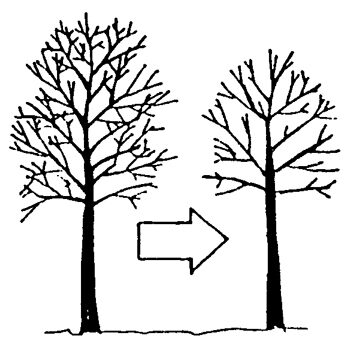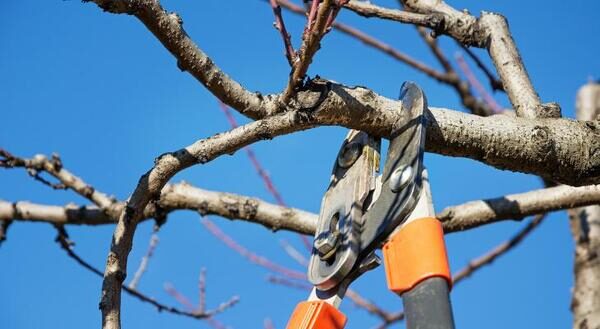Pruning is an essential practice for maintaining tree health, enhancing structural integrity, and promoting aesthetic appeal. While tree pruning can be done at various times throughout the year, one of the best periods for this task is during dormancy. Dormant pruning, which takes place in late fall and winter, offers numerous advantages for tree health and longevity. In this article, we’ll explore why pruning during dormancy is beneficial, highlight optimal pruning times for different tree species, and discuss why topping trees is not recommended.
What is Dormant Pruning?
Dormant pruning refers to the selective removal of branches and limbs while a tree is in its inactive growth phase, typically occurring in late fall, winter, and early spring. During this period, deciduous trees have shed their leaves, making it easier to assess the tree’s structure and make precise cuts. Pruning during dormancy helps trees heal efficiently while reducing the risk of disease and pest infestations.

Why Prune During Dormancy?
There are several advantages to pruning trees during their dormant season:
- Minimized Stress on Trees – Pruning during active growth seasons can cause stress to trees by exposing fresh cuts to environmental factors. In contrast, during dormancy, trees are not actively growing, allowing them to recover more efficiently before spring arrives.
- Improved Healing and Growth – When a tree is pruned in winter, it has ample time to heal before the rapid growth phase in spring. This allows the tree to allocate energy toward wound healing and new growth once warmer temperatures return.
- Reduced Risk of Disease and Pests – Many pathogens and insects that infect pruning wounds are inactive or less active in colder months. Pruning during dormancy reduces the chances of infections such as oak wilt or Dutch elm disease, which spread more easily in warmer weather.
- Better Visibility for Pruning Decisions – With leaves absent, arborists can better assess a tree’s structure and make strategic cuts that improve long-term growth and stability.

Dormant Pruning Periods for Different Tree Species
Not all trees should be pruned at the same time, even during dormancy. Here are some common tree species and their optimal pruning windows:
- Oaks – Best pruned in late fall or winter to avoid oak wilt disease, which is spread by beetles attracted to fresh pruning wounds.
- Maples – Pruning in late winter helps avoid excessive sap flow in early spring.
- Fruit Trees (Apples, Pears, etc.) – Late winter pruning encourages healthy fruit production while reducing disease risk.
- Elms – Like oaks, elms should be pruned in winter to prevent the spread of Dutch elm disease.
- Ash Trees – Best pruned in late winter before spring growth begins to limit the spread of emerald ash borer infestations.
Why We Do Not Recommend Topping Trees
One common yet harmful pruning practice is tree topping, which involves cutting back large branches to stubs in an attempt to reduce tree height. While some homeowners may think this controls growth, topping actually weakens the tree in several ways:
- Encourages Weak, Fast-Growing Shoots – The regrowth from a topped tree is often weakly attached, leading to branches that are more likely to break in storms.
- Increases Susceptibility to Disease and Pests – Large, improperly made cuts create open wounds that can easily become entry points for decay and disease.
- Shortens Tree Lifespan – Trees that have been topped experience significant stress and are more prone to decline over time.
- Ruins Natural Aesthetic – Topping destroys the natural form of a tree, leading to an unappealing, unnatural look.

Call the Experts at Homer Tree Care
Pruning is both an art and a science, requiring knowledge of tree biology and proper cutting techniques. At Homer Tree Care, our certified arborists specialize in dormant pruning to promote the health and longevity of your trees. If you’re considering pruning this season, let our experts provide the best care for your landscape. Contact us today for a consultation and ensure your trees thrive for years to come!

